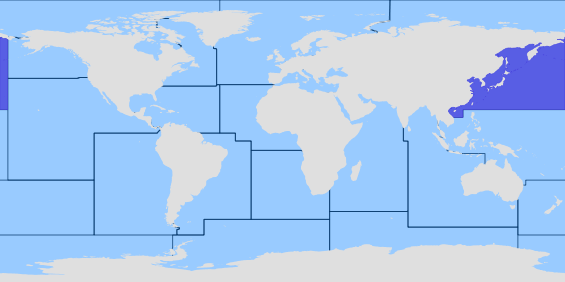ingleseThe carapace has the median teeth before the crevical groove blunt and inconspicuous: the rostral tooth is reduced to a tubercle, the pregastric tooth is replaced by a double row of 1 or 2 tubercles and a few inconspicuous median tubercles. The gastric tooth is the most conspicuous, it isbroad and blunt and bears a double row of tubercles. The surface of the carapace is very uneven and the tubercles are high. Between the postrostral and branchial carinae there are a few tubercles and many smooth areas. The abdomen shows a distinct median longitudinal carina on somites 2 to 5, that of somite 3 is by far the highest, and (like the one fo somite 4) bears numerous tubercles laterally. Somite 1 is quite smooth, and has the transverse groove only slightly noticeable in the extreme lateral parts. The exposed part of the following somites show no arborescent pattern, but in each somite there is a wide transverse groove there. In somite 2, both before and behind this groove there is a perfectly smooth broad ridge, a character in which the species differs from most others. In the following somites these ridges are tuberculate. In somites 4 to 6 the posterior margin is tuberculate. The fourth antennal segment has a sharp and high oblique median carina. Outside the carina the upper surface of the segment shows a row of tubercles. The outer margin of the segment bears 4 or 5 teeth (apical tooth of the segment not included), the inner margin has 5 to 7 teeth of irregular size. The anterior margin of the thoracic sternum is deeply U-shapedly incised. Each of the thoracic sternites bears a rounded median tubercle. The dactyli of pereiopods 3 to 5 show two short fringes of hair each. Colour: the dorsal surface of the body is greyish or purplish brown with darker spots. The distal segment of the antenna is often lighter. The first abdominal somite shows dorsally often a dark blue colour (Ref. 252).
Mostra traduzione
Tradotto dall'inglese da BING
La traduzione seguente è puramente indicativa: a causa della limitata qualità del testo originale, nella versione BETA del sistema le descrizioni morfologiche sono disponibili solo in inglese. Informazioni multilingua saranno disponibili nelle versioni successive.
italianoIl carapace ha i denti mediani prima scanalatura crevical smussato e poco appariscente: il dente rostrale è ridotto a un tubercolo, dente pregastriche è sostituito da una doppia fila di tubercoli 1 o 2 e pochi tubercoli mediani poco appariscente. Il dente gastrico è il più cospicuo, si isbroad e smussato e porta una doppia fila di tubercoli. La superficie del carapace è molto irregolare e i tubercoli sono alti. Tra i postrostral e branchial carinae esistono pochi tubercoli e molte zone lisce. L'addome Mostra una carena longitudinale mediana distinto somiti 2 a 5, quello del somite 3 è di gran lunga il più alto e (come l'un somite fo 4) reca numerosi tubercoli lateralmente. Somite 1 è abbastanza liscia e ha la scanalatura trasversale solo leggermente evidente nelle parti laterali estreme. La parte esposta di somiti seguenti non mostrano nessun motivo arborescente, ma in ogni somite c'è una scanalatura larga trasversale lì. In somite 2, sia prima e dietro questo solco c'è una cresta ampia perfettamente liscia, un personaggio in cui le specie si differenzia dalla maggior parte degli altri. In somiti seguente queste creste sono tubercolate. In somiti 4 a 6 il margine posteriore è tubercolato. Il quarto segmento antennale ha una carena mediana obliquo sharp e l'alta. All'esterno la carena la superficie superiore del segmento Mostra una riga di tubercoli. Il margine esterno del segmento porta 4 o 5 denti (apicale dente del segmento non incluso), il margine interno ha 5 a 7 denti di dimensioni irregolari. Il margine anteriore dello sterno toracico è incisa profondamente U-shapedly. Ognuna degli sterniti toraciche porta un tubercolo mediano arrotondato. I dattili di pereiopods 3 a 5 mostrano due brevi frange di capelli ogni. Colore: la superficie dorsale del corpo è grigiastro o violaceo marrone con macchie più scure. Il segmento distale dell'antenna è spesso più leggero. Il primo somite addominale Mostra dorsalmente spesso un colore blu scuro (Rif. 252).
 Immagine non disponibile
Immagine non disponibile


